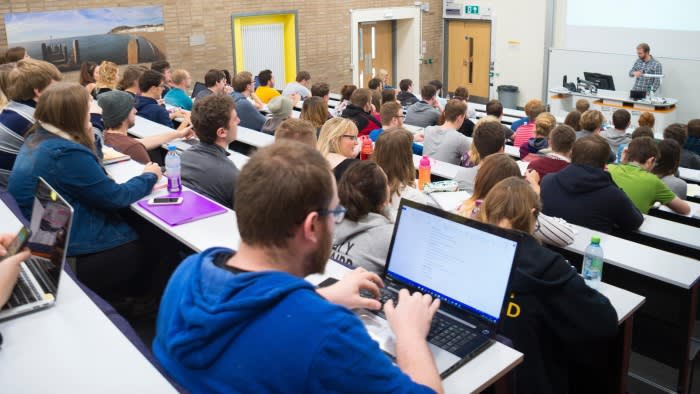Unlock the Editor’s Digest for free
Roula Khalaf, Editor of the FT, selects her favourite stories in this weekly newsletter.
The gap between university entry rates for disadvantaged students and their peers in England has reached their highest level since records began in 2005.
Twenty-nine per cent of students who had received free school meals progressed to university by the age of 19, compared with 50 per cent of their peers, in the academic year 2022-23, according to government data.
The disparity in the progression rate climbed to 21 percentage points — up from the all-time low of 17 percentage points in the academic year ending in 2014, data released on Thursday showed. Free school meals are provided to children from families that receive certain welfare benefits.
The data reflects the disruption to learning caused by the Covid-19 pandemic compounded by rising living costs, which disproportionately affected outcomes for students from disadvantaged backgrounds, said analysts.
“There is a long-tail of impact on those from disadvantaged backgrounds and so we could see the picture get worse as the attainment gap in schools has widened,” said Carl Cullinane, director of research and policy at social mobility charity the Sutton Trust.
“The pandemic and the cost of living crisis are going to cast a long shadow over the economy. Many people have said it is a ticking time bomb for social mobility,” he added.
The gap in progression rates to the top-ranking universities reached a record 11 percentage points in 2022-23, despite a rise in the share of free school meals students who were awarded places.
More than 6 per cent of free school meals students went on to study at the high tariff universities by the age of 19, compared with almost 17 per cent of their peers.
Cullinane said that high tariff universities had boosted their intakes in recent years, but the bulk of the additional students were from more advantaged backgrounds.
“Universities have been focused on areas-based measures of disadvantage and tried to protect admissions from these groups because they did not have data on which students had access to free school meals,” he added.



